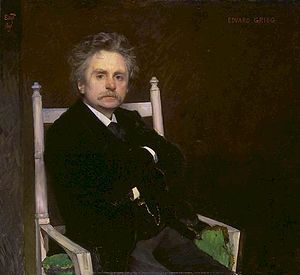


Several of his doctors became his friends. Grieg was admitted many times to spas and sanatoria both in Norway and abroad. He suffered from numerous respiratory infections, and ultimately developed combined lung and heart failure. Throughout his life, Grieg's health was impaired by a destroyed left lung and considerable deformity of his thoracic spine. Naturally, I did learn something there, but my individuality was still a closed book to me." ĭuring the spring of 1860, he survived two life-threatening lung diseases, pleurisy and tuberculosis. About his study in the conservatory, he wrote to his biographer, Aimar Grønvold, in 1881: "I must admit, unlike Svendsen, that I left Leipzig Conservatory just as stupid as I entered it. An exception was the organ, which was mandatory for piano students. He disliked the discipline of the conservatory course of study. Grieg enrolled in the conservatory, concentrating on piano, and enjoyed the many concerts and recitals given in Leipzig. Bull recognized the 15-year-old boy's talent and persuaded his parents to send him to the Leipzig Conservatory, the piano department of which was directed by Ignaz Moscheles. ĭuring the summer of 1858, Grieg met the eminent Norwegian violinist Ole Bull, who was a family friend Bull's brother was married to Grieg's aunt. He studied in several schools, including Tanks Upper Secondary School. His mother was his first piano teacher and taught him to play when he was aged six. Įdvard Grieg was raised in a musical family. Grieg's paternal great-great-grandparents, John (1702-1774) and Anne (1704-1784), are buried in the abandoned churchyard of the ruinous Church of St Ethernan in Rathen, Aberdeenshire, Scotland. After the Battle of Culloden in Scotland in 1746, Grieg's great-grandfather, Alexander Greig (1739-1803), travelled widely before settling in Norway about 1770 and establishing business interests in Bergen. The family name, originally spelled Greig, is associated with the Scottish Clann Ghriogair (Clan Gregor). His parents were Alexander Grieg (1806–1875), a merchant and the British Vice-Consul in Bergen and Gesine Judithe Hagerup (1814–1875), a music teacher and daughter of solicitor and politician Edvard Hagerup. Background Įdvard Grieg (1891), portrait by Eilif PeterssenĮdvard Hagerup Grieg was born in Bergen, Norway (then part of Sweden–Norway). The Edvard Grieg Museum at Grieg's former home Troldhaugen is dedicated to his legacy.
EDVARD GRIEG MORNING PROFESSIONAL
Grieg is the most celebrated person from the city of Bergen, with numerous statues which depict his image, and many cultural entities named after him: the city's largest concert building ( Grieg Hall), its most advanced music school ( Grieg Academy) and its professional choir (Edvard Grieg Kor). His use of Norwegian folk music in his own compositions brought the music of Norway to fame, as well as helping to develop a national identity, much as Jean Sibelius did in Finland and Bedřich Smetana in Bohemia. He is widely considered one of the leading Romantic era composers, and his music is part of the standard classical repertoire worldwide.

Edvard Hagerup Grieg ( / ɡ r iː ɡ/ GREEG, Norwegian: 15 June 1843 – 4 September 1907) was a Norwegian composer and pianist.


 0 kommentar(er)
0 kommentar(er)
